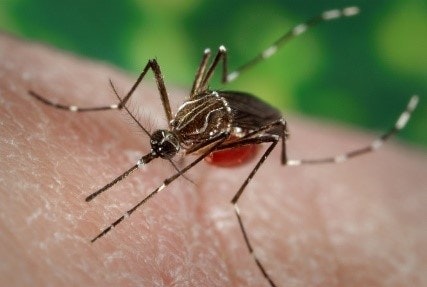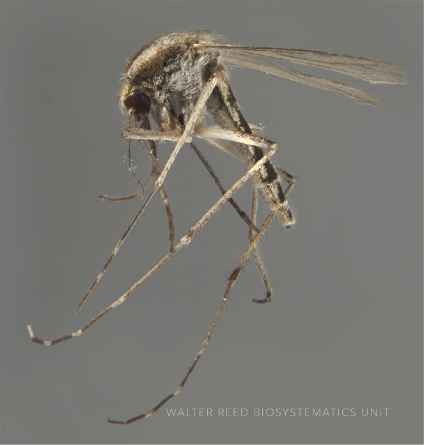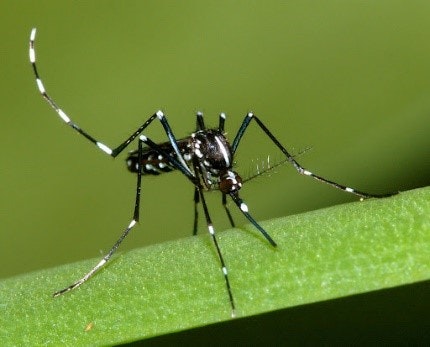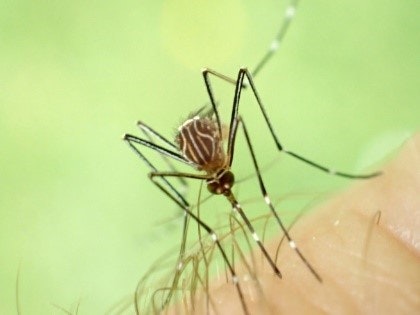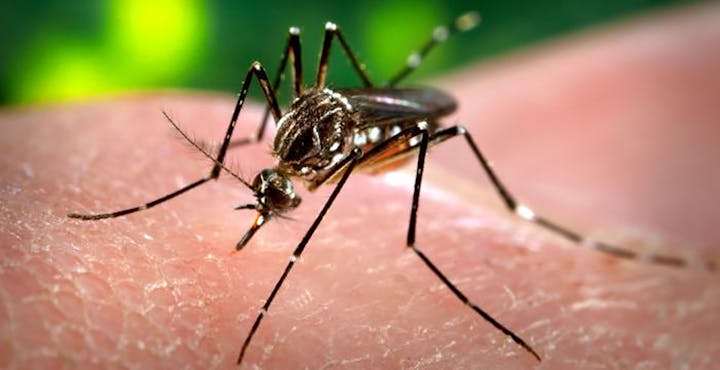Which types of mosquitoes are present in Kern County?
Globally, there are more than 3,500 different species of mosquitoes, of which 176 species are found in North America. In California, there are 53 species of mosquitoes and, in Kern County, we have around 26 species. Mosquito eggs need water to hatch and for hatchlings (larvae) to develop into subsequent life stages: pupae and adults. Eggs take 7-10 days to develop into adult mosquitoes depending on environmental factors such as temperature and humidity. Only female mosquitoes bite and suck blood because they need protein for egg production; males do not quest for blood. Instead, they feed on flower nectar. Three types (‘genera’) of mosquitoes are most commonly found in California. These are Aedes, Culex, and Anopheles. Each of these genera of mosquitoes has different lifestyles (‘ecology’) which vary by habitat and host preference, as well as the diseases they can transmit. The one thing that all mosquitoes have in common is the need to lay their eggs in standing water.
Figure 1. Useful characteristics for distinguishing mosquitoes common in Kern County.
.jpg?ixlib=rb-1.1.0&w=2000&h=2000&fit=max&or=0&s=bf96a9054e8f790e75d774e798f1d508)
(Source: CDC and Souza, 2017)
1. Aedes
Kern County is home to a few different Aedes mosquitoes, including the most recently introduced Aedes aegypti. Aedes aegypti, a considerable nuisance commonly referred to as “ankle biters” or “yellow fever mosquitoes,” is an invasive species that was first found in Kern County in 2014 and is now an established resident. Aedes mosquitoes are adapted to grow and live around and inside human settlements and prefer to feed on humans. If you are being harassed by a mosquito during the middle of the day, it is like an Aedes aegypti. Unlike other mosquitoes, Aedes mosquitoes are active at all times not only at dusk and dawn. However, they are well known for being daytime biters (‘diurnal’ mosquitoes). Importantly, Aedes are major vectors of diseases, meaning they are capable of transmitting pathogens that can infect humans.
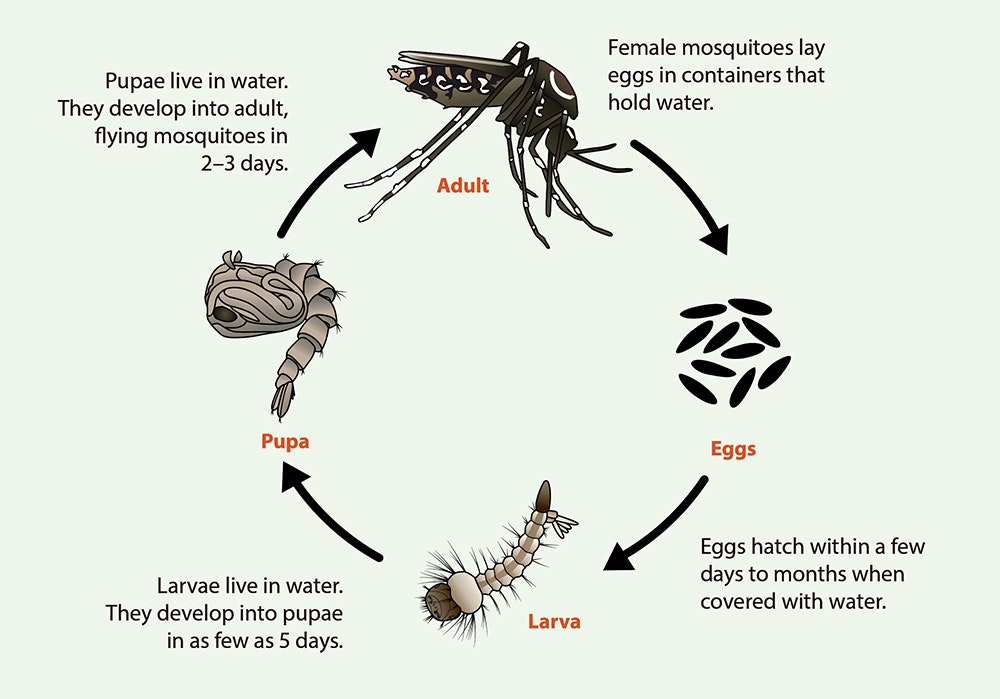
(Source CDC)
Human diseases they transmit: Yellow fever (virus), Zika (virus), dengue (virus), and chikungunya (virus). As of December 2020, none of these pathogens have been found in Kern County.
Habitat: Standing water in containers - commonly including flowerpot saucers, swimming pools, discarded toys, and old tires.
Eggs: Look for individual black, cigar-shaped eggs adhering to the sides of containers where water is left standing. Although eggs and newly hatched larvae are difficult to see right away, all life stages are visible to the naked eye.
2. Culex
Culex mosquitoes prefer to feed on birds and animals but when preferred hosts are scarce - they will feed on humans. This feeding habit makes Culex mosquitoes capable of acquiring and transmitting diseases to humans that primarily circulate in birds, such as the West Nile virus (WNV) and other encephalitis viruses, namely Western equine encephalitis virus (WEE) and St. Louis encephalitis virus (SLE). Culex mosquitoes are mostly brown and lack any distinct patterns on their body. Culex tarsalis and Culex quinquefasciatus are commonly found in Kern County and have been shown to transmit WNV, SLE, and WEE. These mosquitoes are most active during dusk and dawn (‘crepuscular’ mosquitoes).
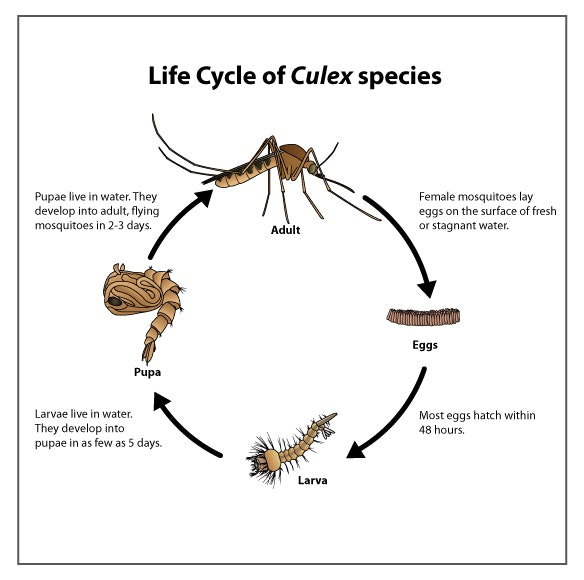
(Source CDC)
Human diseases they transmit: West Nile (virus), St. Louis encephalitis (virus), and Western/Eastern equine encephalitis (virus).
Habitat: standing water – especially nutrient-rich water such as ponds, animal water troughs, ditches, sewer, etc.
Eggs: Look for rafts of eggs floating on the surface of the water. Rafts are typically yellowish-brown and resemble bundles of densely bound tubes. Although eggs are tiny, all life stages are visible to the naked eye.
3. Anopheles
Anopheles mosquitoes are primary vectors of malaria, a disease that impacts millions of people every year. Malaria was once a prominent mosquito-borne disease in the US. However, this disease was considered eradicated in the 1950s due to effective surveillance and control programs. Because of this intervention, Anopheles pose the lowest risk to human health among the mosquitoes present in Kern County. However, as long as we create habitat for Anopheles mosquitoes there remains an opportunity for malaria to re-appear. We find Anopheles freeborni, Anopheles punctipennis, and Anopheles franciscanus at our trapping sites around the county. Anopheles eggs, larvae, and adults are distinct from Culex and Aedes (refer to figure 1).
Human disease they transmit: Malaria (Parasite: Plasmodium). Local transmission of malaria is not present in Kern County.
Habitat: Water with vegetation – ponds or swamps
Eggs: Look for individually laid eggs. Anopheles eggs have floats to keep them on the surface of the water. Eggs resemble small flying saucers.
Aedes ladies in Kern county
